Rough chervil identification and control
Information about the noxious weed rough chervil. Rough chervil is also known by its scientific name, Chaerophyllum temulum.
About this weed
Rough chervil is a Class B noxious weed with selective regulation in King County. Rough chervil is required for control in selected areas on the Green River and its tributaries and on the Cedar River and its tributaries, as described on the King County Weed List.
This requirement is dependent on the noxious weed program or program partners providing rough chervil control services in the selected area.
Rough chervil is known as Chaerophyllum temulum and it is in the carrot family. Other common names include leaning, nodding, intoxicating and bent chervil.
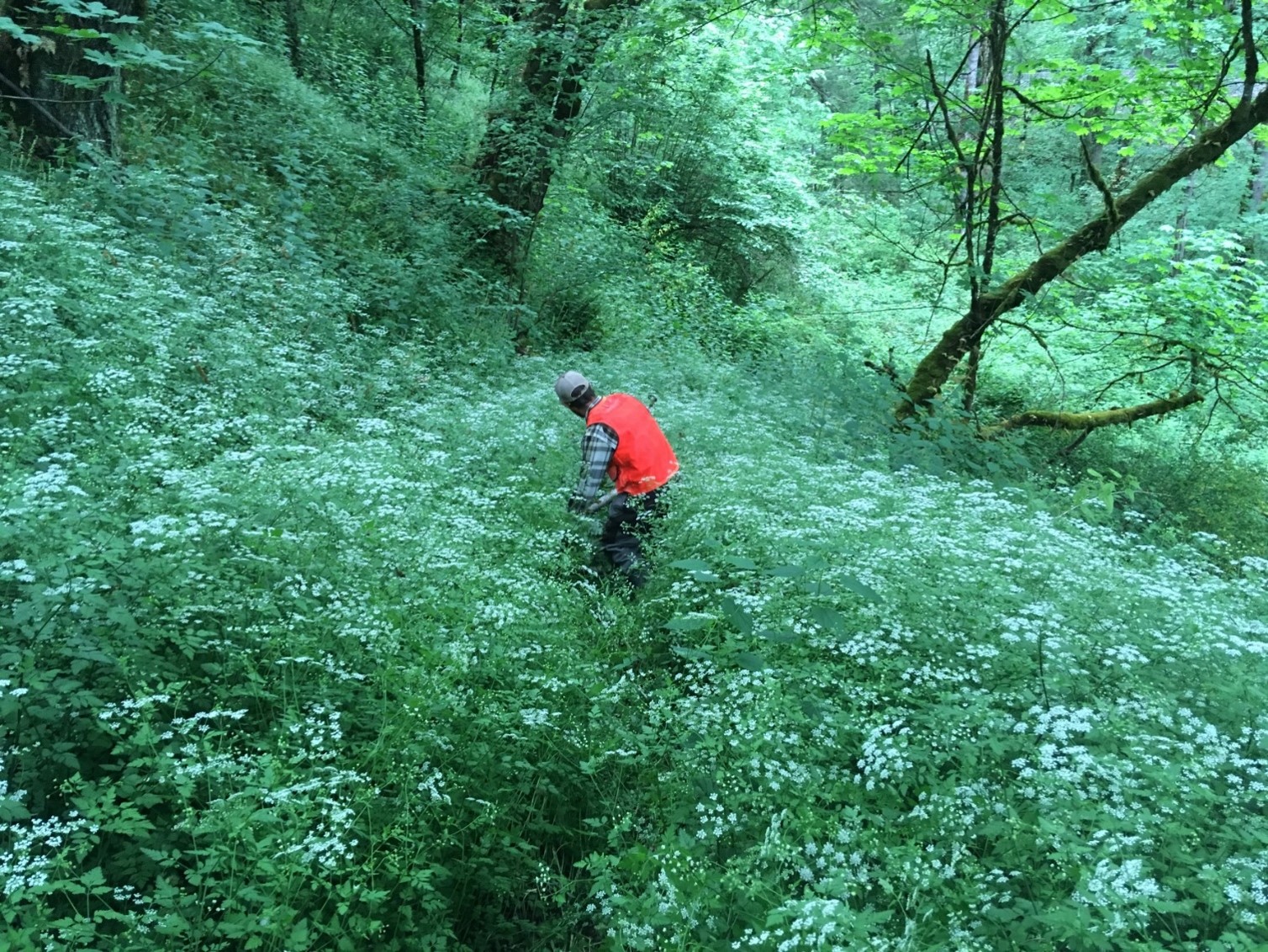
Why it’s a noxious weed
Rough chervil can become abundant and dense in disturbed or open areas. It outcompetes native plants easily because it spreads quickly by seeds.
Rough chervil is a disturbance-dependent plant and it relies heavily on human activities to thrive. Once it is established in a disturbed area, rough chervil can quickly spread to nearby areas.
A few examples of frequently disturbed areas that are especially vulnerable include: roadsides, railroads, gravel pits, timber and agricultural production, trails, slopes, fencerows, and riparian areas (habitat along rivers and streams)
There is evidence that rough chervil can have a negative impact on surrounding soil and mushroom networks. It is possible that rough chervil is just as toxic as poison hemlock if consumed, posing public health threats to people, pets, livestock, and wildlife.
Plant description
Rough chervil typically grows as a biennial, meaning that it takes 2 years to mature and flower. Note that some plants may flower in both the first and second years.
In western Washington, plants first begin to appear as a dense carpet of new seedlings. They form their first true leaves by early April.
The rosettes, or 1st year plants, develop in the later summer. The rosettes then remain dormant until the following spring. Shortly after, they grow rapidly and develop into mature plants.
Flowers bloom late April to June and again later in the summer and fall. Rough chervil has umbrella-shaped clusters of white flowers that “nod” or droop while in bud.
It has hairy, solid stems with long and spreading hairs that range from purple in full sun to green with purple spots.
The leaves are rounded, similar to cilantro, with a rough texture and short hairs.
It is smooth with no burs or spines or oblong/ridged fruits.
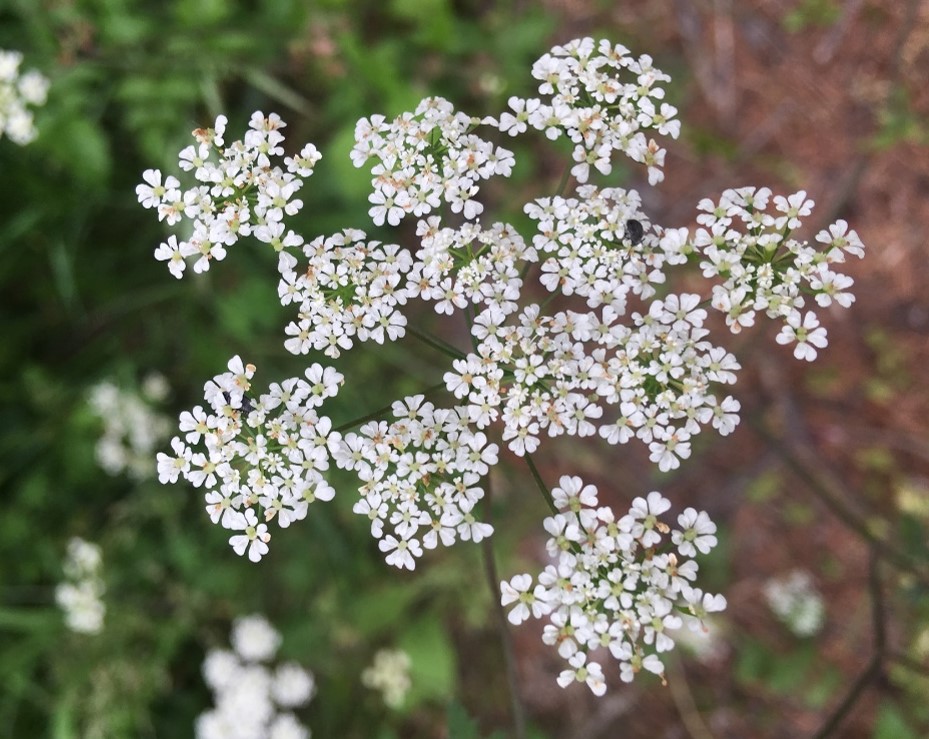
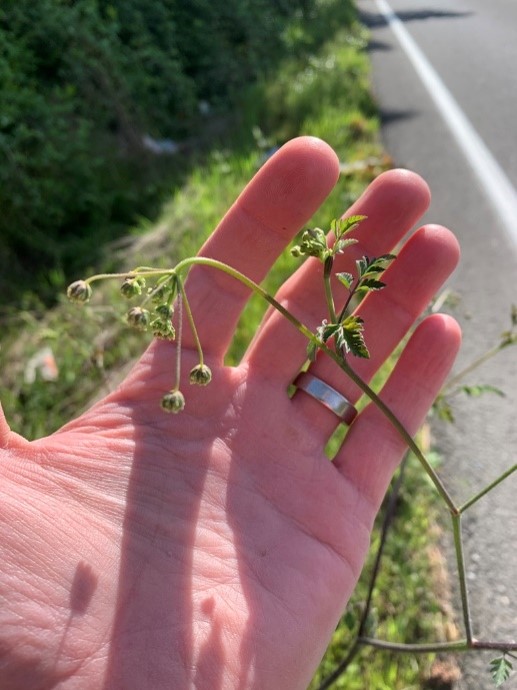
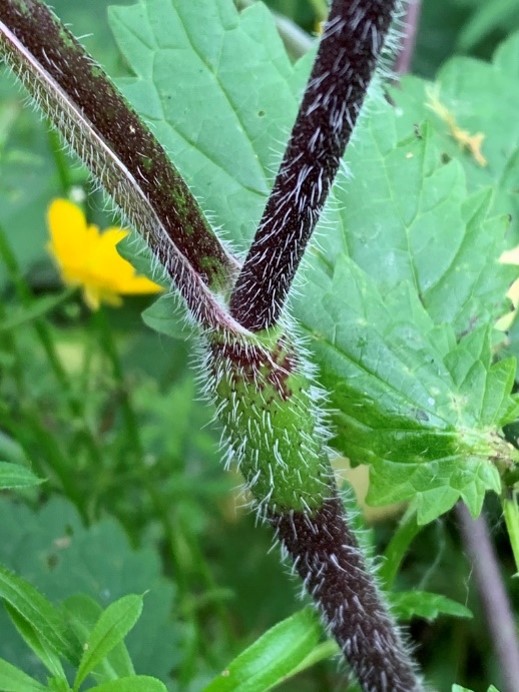
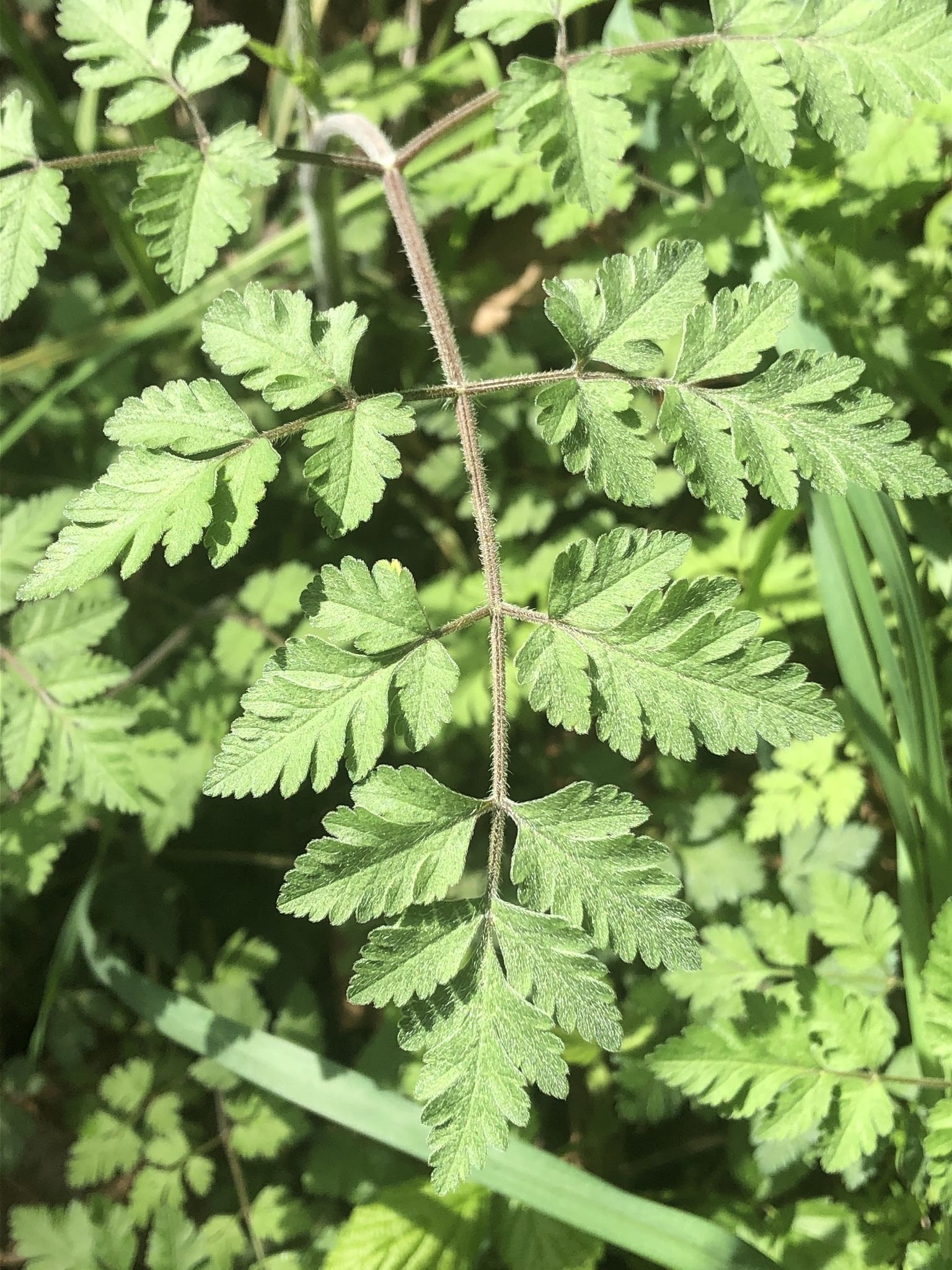
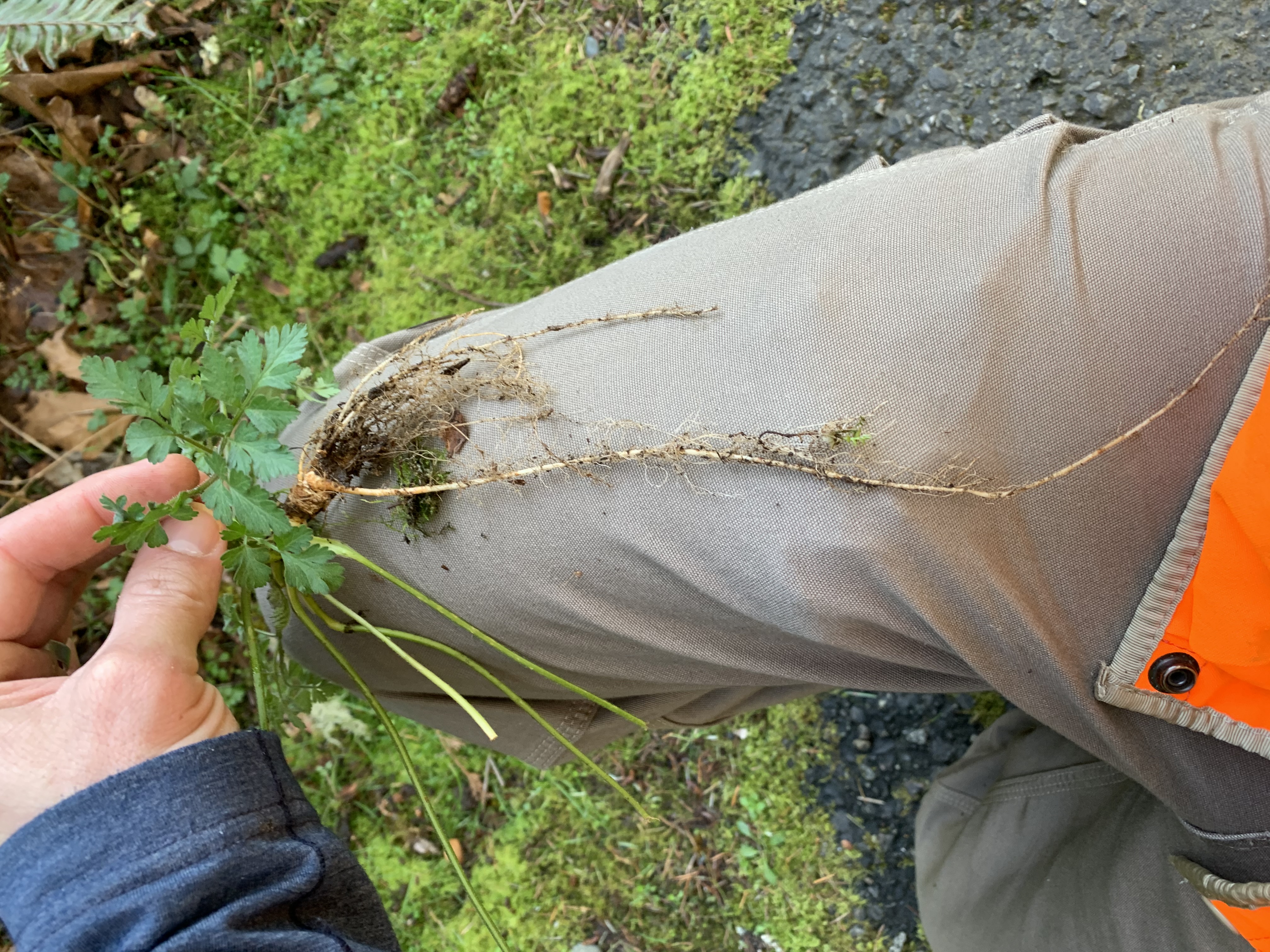
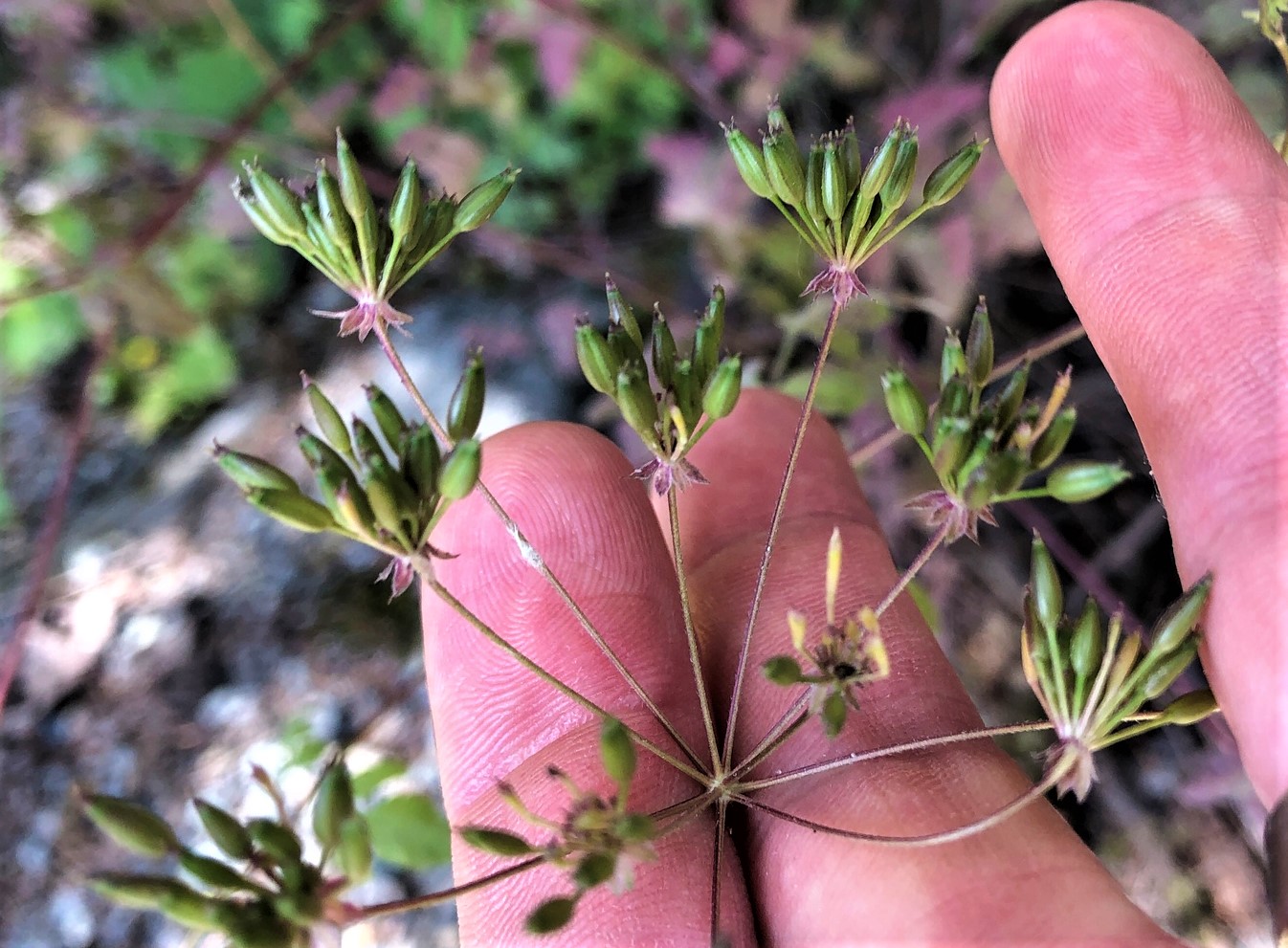
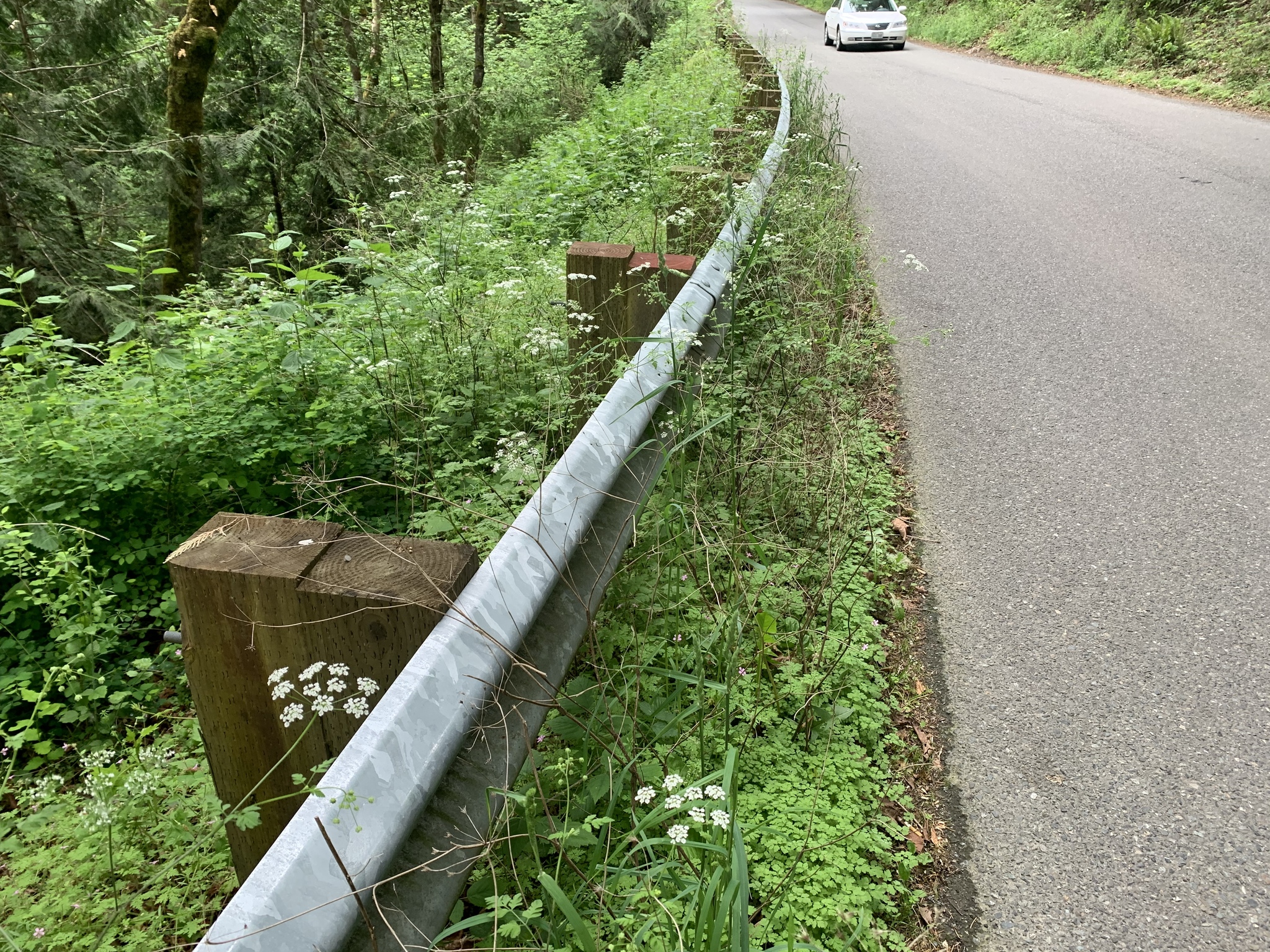
Be aware of look-alike plants
Many plants look similar to rough chervil, including:
- Poison hemlock (Conium maculatum)
- Wild carrot/Queen Anne's Lace (Daucus carota)
- Wild chervil (Anthriscus sylvestris)
- Bur chervil (Anthriscus caucalis)
Other similar looking plants are members of the parsley/carrot family such as fennel, chervil, and anise.
When in doubt, take photos and share them with us or report them on iNaturalist.
What to do if you find it
While control of rough chervil is required in selected areas of King County, control is not required in most of the county. In spite of this, we would still like to know where it is established. If infestations are impacting riparian areas, we can work to prevent serious impacts.
While most property owners are not required to control this species, we highly recommend it. If you see rough chervil growing in or near wilderness areas, please contact our office.
Control methods
We recommend using a combination of methods to control noxious weeds. In areas with few weeds, it is important to act quickly before they become harder to control. Make a long-term plan as it often takes several years to get rid of most weeds. Start in the least infested areas first and then move into more heavily infested areas.
When you are checking treatment progress it is important to keep in mind that seedlings develop slowly in the spring. Prior year’s control efforts may initially appear to be more successful than they were.
Leaves may not fully develop until May, and then again for another generation late summer.
If you are trying to prevent the spread of rough chervil, it's important to reduce soil disturbances from:
- Vehicles
- Machinery
- Off-trail and off-leash dog walking, etc.
Manual control
For individual plants or small patches, hand pull or dig up the roots when the soil is moist. Take care to remove all roots, as plants can regrow from the root crown. Disturbed areas should be mulched and/or re-planted to prevent spread of rough chervil. Rough chervil may cause skin rashes. Wear gloves and long sleeves to avoid skin contact.
Mechanical control
Mowing rough chervil can expose someone to multiple toxins present within the plant and is therefore not recommended. While mowing may temporarily reduce rough chervil’s seed output if done while still in flower, it will not kill the plants. Stems will grow back from the root crown.
Chemical control
Stay safe when using herbicide:
- Always read the label before use.
- Wear a long-sleeved shirt, long pants, shoes, and eye protection.
- Follow state and local regulations.
Herbicide may be useful for large, dense infestations. Glyphosate (nonselective) and Triclopyr (broadleaf selective) have been effective on early flowering and vegetative individuals, especially in rosette (1st year) form in spring or fall.
Avoid spraying where there is a chance that herbicide will enter a waterway or wetland unless you are using a state-approved aquatic herbicide and have the required permits and licenses to do so. Use of pesticides in water is regulated in Washington state. See Washington Department of Ecology Aquatic Pesticide Permits for details.
If you are qualified to do so or if your infestation is not near the water’s edge, follow these general best practices:
- Apply in the spring or fall on rosettes and dense regrowth.
- Take care to avoid desirable plants.
- Use aquatic-approved products in situations where water is present.
- Follow the product label and all laws and regulations regarding herbicide use on the site.
For more information contact us or your local weed board.
Disposal instructions
Dispose of rough chervil plants in household garbage or take to a transfer station for disposal. Do not put plants in compost or yard waste bins.
Put plants in sturdy garbage bags. If the plants are in seed, carefully cut off the seed head and place in a bag without dispersing the seeds.
Never dump plant material in parks or natural areas because weeds can spread from yard waste piles. Consider covering prior areas of infestation with mulch and/or replanting with beneficial and/or native species. Burning is not recommended because of toxins found within the plant.
Noxious Weed Disposal - Washington State Noxious Weed Control Board

 Translate
Translate